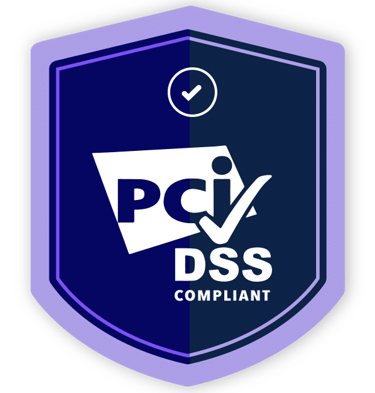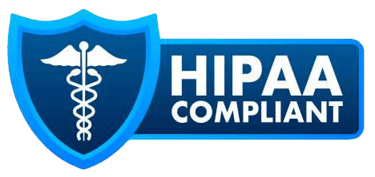How to Handle a Plan of Correction (POC) After a Deficiency: A Home Health Agency’s Guide to Turning Deficiencies into Compliance
Learn how to write and implement an effective CMS-compliant Plan of Correction (POC) after a deficiency in your home health agency. This guide includes formatting tips, real examples, and how HealthBridge can help you avoid repeat citations and stay compliant.


Receiving a deficiency following a CMS survey can be a stressful experience for any Home Health Agency (HHA), but it’s also an opportunity for growth and improvement. A well-written Plan of Correction (POC) is not only required to retain your Medicare certification, but it also reflects your agency’s commitment to quality, compliance, and patient safety.
Under CMS Conditions of Participation (CoPs), a Plan of Correction is required for any standard- or condition-level deficiency cited during a survey, including those related to infection control, documentation, patient rights, QAPI, and more. The POC must be submitted within 10 calendar days of receiving the Statement of Deficiencies (Form CMS-2567). Agencies must then implement the corrections and maintain them as part of continuous operations.
This guide provides a step-by-step overview on how to craft and execute an effective POC that satisfies surveyors, meets federal and state expectations, and protects your agency from repeat citations or enforcement actions.
Step 1: Understand the CMS-2567 Form and What Was Cited
The CMS-2567 Statement of Deficiencies outlines each citation with references to the violated regulation (e.g., §484.55 for assessment, §484.65 for QAPI).
Read each deficiency carefully and determine:
What went wrong?
Which process or system failed?
How widespread is the issue (systemic vs. isolated)?
Survey Tip: If the deficiency is unclear, you are allowed to contact the state survey agency for clarification before submitting your POC.
Step 2: Follow the Required Format for Your POC
Each cited deficiency must be addressed with a structured response that includes five core elements. CMS expects the following in your Plan of Correction:
How the deficiency will be corrected
How your agency will ensure others are not affected
What systemic changes you will implement
How you will monitor to ensure ongoing compliance
The completion date (within 30-60 days is typically acceptable)
Important: Do not include statements like "we do not agree" or "this didn’t happen." The POC is not a rebuttal; it is your commitment to fix the issue.
Step 3: Develop Specific and Measurable Actions
Use clear, actionable steps that show real effort toward correction. Avoid vague language like "staff was educated" without proof. Examples:
Good Example:
“All clinical staff will undergo retraining on comprehensive assessments per §484.55, using updated materials. Completion will be documented by signed rosters and quizzes. New hires will receive the same training during onboarding.”
Poor Example:
“We told staff to do better with documentation.”
Survey Tip: Use the SMART format (Specific, Measurable, Achievable, Relevant, Time-bound) for corrective actions.
Step 4: Assign Responsibility and Set a Timeline
Every action must have:
A responsible party (e.g., Administrator, DON, QAPI Coordinator)
A target date for completion
Evidence of completion, such as:
Audit forms
Training logs
Revised policy/procedure
Monitoring reports
Example:
“The QAPI Coordinator will conduct weekly audits of clinical notes for 90 days to ensure proper medication reconciliation. Results will be reviewed in QAPI meetings and adjusted as needed.”
Step 5: Implement Systemic Changes
For many citations, CMS expects system-wide interventions, not just one-time fixes. This might include:
Revising policies and procedures
Updating orientation or annual competency checklists
Incorporating issues into your QAPI program
Establishing regular monitoring tools
Survey Tip: If a citation involved patient safety or a repeat issue, surveyors will expect to see ongoing tracking and follow-up—not just immediate correction.
Step 6: Submit the POC On Time and Retain Proof
Submit your POC within 10 calendar days from receiving the CMS-2567 (unless your state has a shorter deadline).
Keep documentation of all corrective actions, including training rosters, policy revisions, audits, and meeting minutes.
Note: Once submitted, the state agency will review your POC for acceptability. If rejected, you'll need to revise and resubmit, which can delay clearance of your deficiencies.
Optional: Request Informal Dispute Resolution (IDR)
If you believe a citation is factually incorrect, you can request Informal Dispute Resolution (IDR)—but this is separate from submitting a POC.
IDR must be requested within 10 calendar days
Filing an IDR does not stop the clock on submitting your Plan of Correction
Example of a Common Deficiency and Response
Deficiency: Failure to conduct and document comprehensive assessments per §484.55
POC Response:
All clinicians will be retrained on completing comprehensive assessments within the required timeframes.
Affected patients will have their records reviewed and updated to ensure accuracy.
The assessment documentation checklist will be updated and added to the QA review process.
10% of all SOC/ROC assessments will be audited weekly for 3 months.
Completion date: August 30, 2025. Responsible: Director of Nursing.
Why Strong POCs Matter
A successful POC helps your agency:
Avoid follow-up visits and repeat citations
Prevent condition-level findings or terminations
Demonstrate a commitment to ongoing quality
Build confidence with regulators, referral partners, and patients
HealthBridge: Your Trusted Partner for Survey Support and POC Development
At HealthBridge, we specialize in helping home health and hospice providers navigate post-survey requirements with precision and speed. Our expert consultants can:
Analyze your CMS-2567
Draft clear, compliant, and professional Plans of Correction
Conduct root cause analyses
Implement internal monitoring tools and audit plans
Train your team to prevent future deficiencies
Whether you’ve received a minor citation or a condition-level deficiency, HealthBridge is here to guide you every step of the way.
Contact us today to get immediate help with your Plan of Correction and protect your Medicare certification with confidence.







